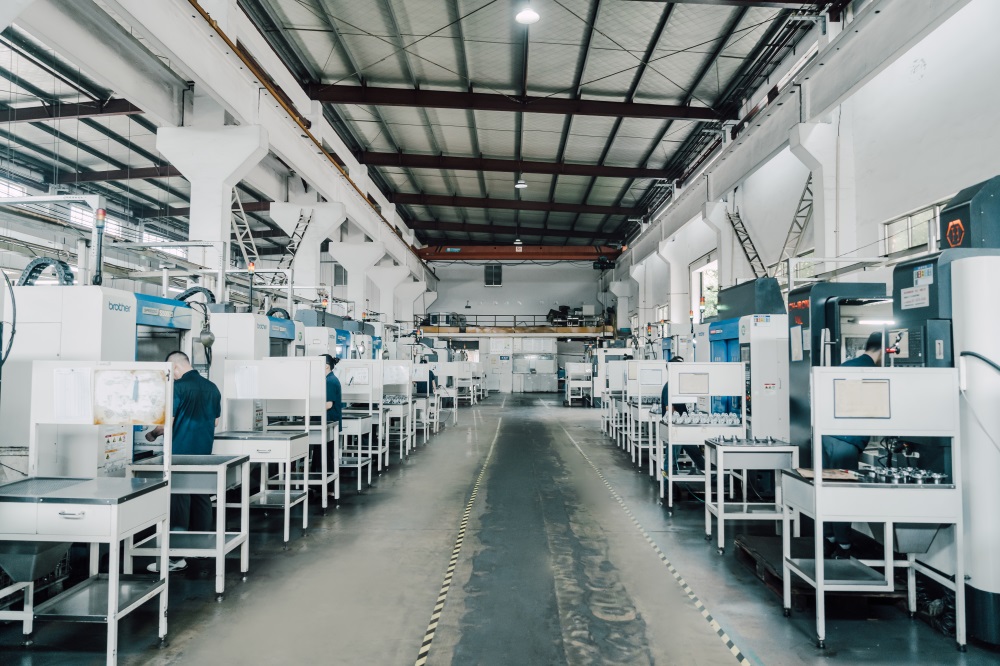- This topic is empty.
-
AuthorPosts
-
19/11/2024 at 18:30 #81312
In the precision CNC machining parts factory, quality control is not just a department—it's a culture. It's a relentless pursuit of excellence that permeates every aspect of the manufacturing process. From the initial design phase to the final product inspection, quality control is the backbone that ensures every component meets the highest standards of precision and reliability. Let's delve into the strategies and methodologies that precision CNC machining factories employ to maintain this level of excellence.

1. Clear Communication of Specifications
The first step in ensuring quality control is clear communication of specifications. Every part that undergoes CNC machining comes with a set of specifications, tolerances, and finishing requirements. These must be clearly documented, including the type of material, surface finishes, dimensions, and more. Detailed CAD drawings and 3D models should be provided with the necessary dimensional data and annotations. This helps the machinist understand the client’s requirements precisely, reducing the risk of errors or misinterpretation.
2. Regular Calibration and Maintenance of Machines
For CNC machines to maintain their accuracy and precision, they must be regularly calibrated and maintained. Regular maintenance schedules should be followed to ensure that the machines are functioning correctly. Any deviation in machine accuracy can have a direct impact on the quality of the parts produced. Additionally, tools used in the machining process, such as cutting tools, drills, and end mills, should be inspected and replaced as needed. Worn tools can lead to poor surface finishes and dimensional inaccuracies.
3. In-Process Monitoring and Inspection
One of the best ways to ensure consistent quality is to conduct in-process inspections during machining. Rather than waiting until the end of the production run, parts should be inspected at different stages of the machining process. This can be done using a combination of visual checks, dimensional measurements, and specialized inspection tools. In-process monitoring helps to catch defects early and allows for adjustments to be made to the process in real-time. This reduces the likelihood of producing non-conforming parts and minimizes material waste.
4. Implementing Statistical Process Control (SPC)
Statistical Process Control (SPC) is a method of using statistical techniques to monitor and control production processes. It helps in detecting variations in the machining process that may affect quality. By collecting data on critical dimensions and using control charts, manufacturers can monitor trends and deviations from the desired specifications. SPC enables manufacturers to take corrective actions proactively, preventing defects before they occur. It’s an essential tool in maintaining high-quality standards throughout production.
5. Use of Coordinate Measuring Machines (CMM)
Coordinate Measuring Machines (CMMs) are critical tools for inspecting parts after CNC machining. CMMs use precise probing to measure the dimensions of machined parts accurately. They are particularly useful for checking complex geometries, tight tolerances, and parts with intricate features. By using a CMM for final inspection, manufacturers can ensure that every part meets the exact specifications required. This level of precision helps maintain consistency and reduces the chances of sending non-conforming parts to customers.
6. Material Verification and Traceability
In many industries, the type of material used for machining is as important as the machining process itself. For example, in aerospace and medical applications, specific metals or alloys may be required due to their strength, durability, or corrosion resistance. To ensure quality control, manufacturers must verify the materials they receive from suppliers and maintain traceability throughout the production process. Material certificates and documentation should be cross-checked, and material properties should be tested as needed.
7. Adherence to International Standards
Adhering to international standards is one of the best ways to ensure consistent quality control. ISO 9001 is a widely recognized quality management system standard that outlines requirements for a systematic approach to controlling production processes and ensuring quality. CNC machining providers that are ISO 9001 certified follow a set of procedures that help in preventing errors, monitoring performance, and making improvements when necessary. Other standards, such as AS9100 (for aerospace) or ISO 13485 (for medical devices), may also be applicable depending on the industry.
8. Employee Training and Expertise
Investing in employee training and expertise is crucial for maintaining quality control. Machinists, inspectors, and engineers must be well-versed in the latest CNC machining techniques, quality control methodologies, and the specific requirements of the industries they serve. Regular training and development programs ensure that the workforce stays up-to-date with the latest technologies and best practices.
9. Key Quality Control Parameters
Understanding the key quality control parameters in machining is pivotal. These include dimensional accuracy and tolerance, surface finish and roughness, material hardness and strength, geometric tolerancing, machining process control, tool wear and life, assembly and fit, environmental factors, and compliance with standards and regulations.
10. Techniques and Tools for Quality Control
Essential techniques and tools for quality control in machining include dimensional measurement tools, surface roughness testers, hardness testing equipment, non-destructive testing (NDT) methods, statistical process control (SPC) software, tool condition monitoring, environmental monitoring equipment, geometric dimensioning and tolerancing (GD&T), visual inspection tools, material analysis equipment, assembly and fit testing tools, and documentation and traceability systems.
11. Inspection Stages
Quality testing and inspection in CNC machining applications represent a critical phase, ensuring every machined component meets the high standards of precision and excellence. The inspection stages include raw material inspection, first article inspection (FAI), in-process inspection, dimensional inspection, surface finish inspection, visual inspection, non-destructive testing (NDT), hardness testing, functional testing, assembly and fit-up inspection, final inspection, statistical process control (SPC), documentation and record keeping, post-machining treatments, and packaging and shipping inspection.
Conclusion
In the precision CNC machining parts factory, quality control is a comprehensive and ongoing process that touches every aspect of production. From the initial design and communication of specifications to the final inspection and documentation, every step is carefully managed to ensure that the final product meets the highest standards of precision and reliability. By employing the latest technologies, adhering to international standards, and investing in employee training and expertise, precision CNC machining factories can deliver components that are the epitome of quality and performance.
https://www.okinmachining.com/precision-CNC-machining-process.html
-
AuthorPosts
- You must be logged in to reply to this topic.


